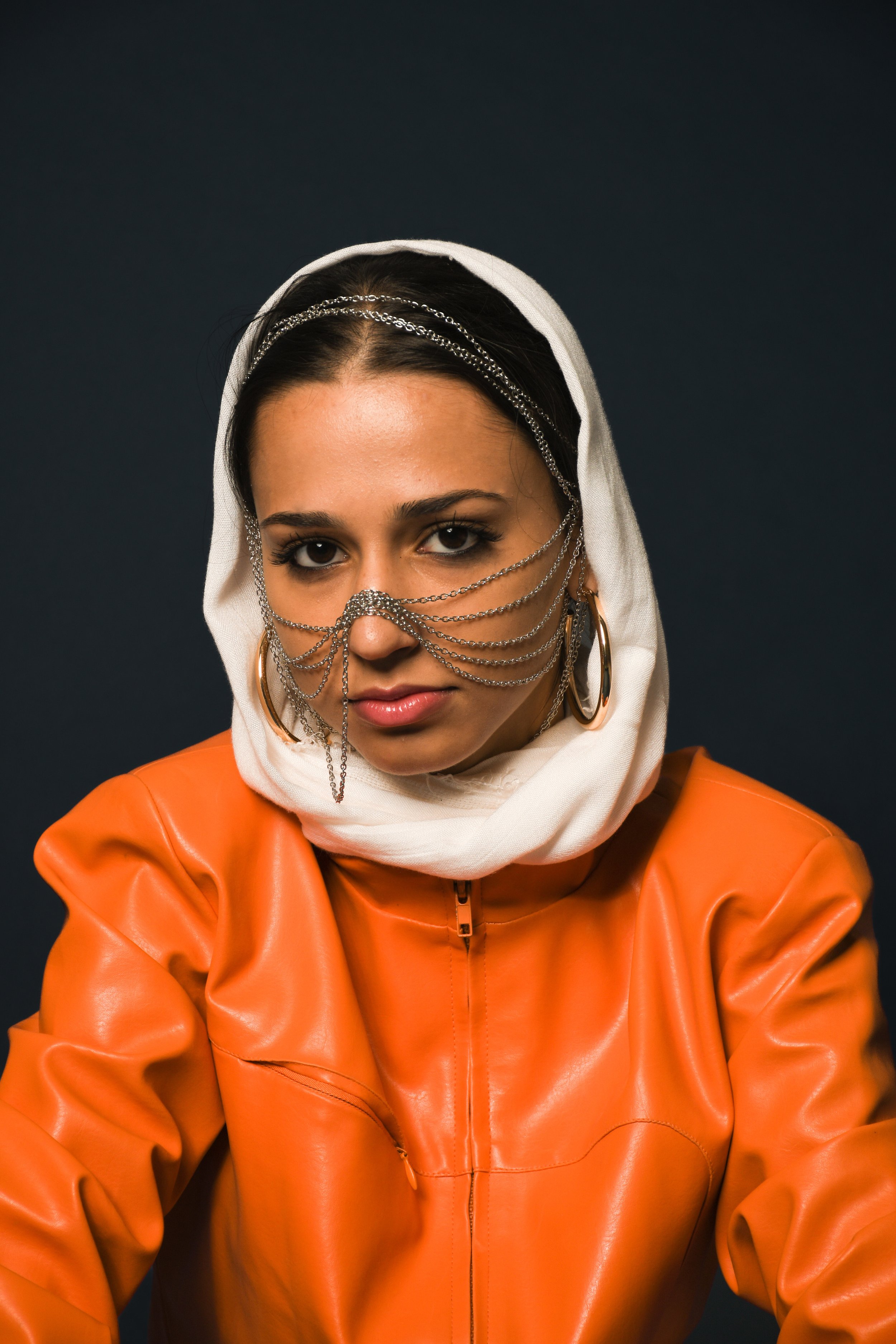Embracing Identity Through Fusion Fashion: A Reclamation of Cultural Narrative
Model: Sumer Brito; Photographer: Billy Lawrence; Stylist: Malcolm Guidry; HMUA: Malcolm Guidry; Set Designer: Billy Lawrence
By Ahana Thapar
Walking through the vibrant streets adorned with stalls overflowing with knick knacks, one can not help but be enchanted by the melodic tinkle calling out to every passerby. The dull shine of oxidized silver jewelry evoked an image of regal Rajasthani Princesses at the epitome of their opulence and the intricate craftsmanship of the engravings mirroring the carvings along the walls of grand palaces. The rows upon rows of colorful jhumkas sparkled like chandeliers–chandeliers perfectly sized to adorn the ears of every passing shopper. Each stall is makeshift, but still manages to carry the weight of tradition older than the streets it lines.
As a child, I remember always being fascinated by the beautiful jewelry that adorned those around me on special occasions. Yet, as time went on, I saw more people trying to dress like those movie stars and celebrities from over 8000 miles away. Trying to emulate the fashion and the lifestyles that were not indigenous to our home–simply because people saw being “Western” as being better. They lost the beauty of the culture in order to assimilate into a society that was not willing to accept them anyway. It always seemed strange … our country boasted traditions of clothing more than 2000 years old, and people brushed it aside for what they called convenience.
For a long time, I saw it as right. It felt like if I followed the trend that everybody else did, fashion would be cakewalk. It could never be enough, however. Simply because there was something fundamental missing, something that made it all lack a soul. I never would have realized it if I had not been to that fateful exhibit of Indian Fashion Through the Ages, a space that showed me just how impactful fusion could be.
Indian fashion has long served as an inspiration for Western designers; starting from the gowns constructed for Queen Victoria that boasted beautiful Indian Brocade fabrics, ranging down to the modern drape-style gowns that borrow from the classic saree. The inspiration ranges from obvious to discreet–with Yves Saint Laurent’s India Collection from 1982 serving as one end of the spectrum and Alexander McQueen’s Peacock Dress from 2008-2009 representing more of the other. Yet, Indian fashion was never seen as the centerpiece.
“This movement is not just about aesthetics; it is about reclaiming cultural narratives.”
Preserving ancient culture is not merely about safeguarding traditions; it is about safeguarding identity. In a world dominated by globalization, where soft power often dictates aesthetic superiority, cultural pride can easily erode. However, as awareness grows about the suppression of indigenous cultures, a movement towards fusion fashion has emerged, bridging the gap between tradition and modernity.
In the heart of this movement lies India, a land rich in history and heritage. Here, the fusion of Indian and Western fashion is not merely a trend; it is a reclamation of identity. This fusion, a harmonious blend of traditional craftsmanship and contemporary designs, breathes new life into age-old techniques, creating a visual feast that captivates the eye and the heart.
With designers like Rahul Mishra and Gaurav Gupta taking the stage by fire in Paris Fashion Week 2024, the narrative seems to be changing. While their designs focus on a supposed Western ideal, their emphasis on traditional techniques brings beauty to the runway that was not seen before. Gaurav Gupta revived the beautifully intricate embroidery techniques like zardozi – a technique that uses gold thread to create beautiful designs on a variety of materials. Rahul Mishra, on the other hand, focuses on the use of traditional Indian fabrics and handiwork to create powerful silhouettes to capture the audience. Their work symbolizes a newfound harmony between Western silhouettes and cultural techniques.
Similarly, Indian jewelry, with its intricate designs and symbolic motifs, is undergoing a revival. From statement necklaces to delicate anklets, these pieces serve as a reminder of our rich cultural heritage, reinterpreted for the modern world. Oxidized silver and gold-plated jhumkas, once relegated to special occasions, are now making a statement on the streets of fashion capitals worldwide. The easiest way to spice up an outfit for any Desi Girl today–ranging from people who work in offices to influencers who capture the attention of the ever-restless content-seekers on social media–is to incorporate traditional jewelry. It seems to almost instantly give an outfit a piece of je-ne-sais-quoi that adds to the allure of Desi women around the world.
“Preserving ancient culture is not merely about safeguarding traditions; it is about safeguarding identity.”
But this movement is not just about aesthetics; it is about reclaiming cultural narratives. Each garment, each accessory, carries with it a story of resilience and survival. By embracing our heritage, we assert our identity in a world that often seeks to homogenize. As we navigate an increasingly interconnected world, it is essential to celebrate the diversity that defines us. Fusion fashion is not about erasing differences; it is about honoring them. It is about finding beauty in the tapestry of cultures that make up our collective identity. In embracing our heritage, we reclaim our voice. We declare that our stories matter and that our traditions are worthy of preservation. And in doing so, we weave a new narrative—one that honors the past while embracing the future.





